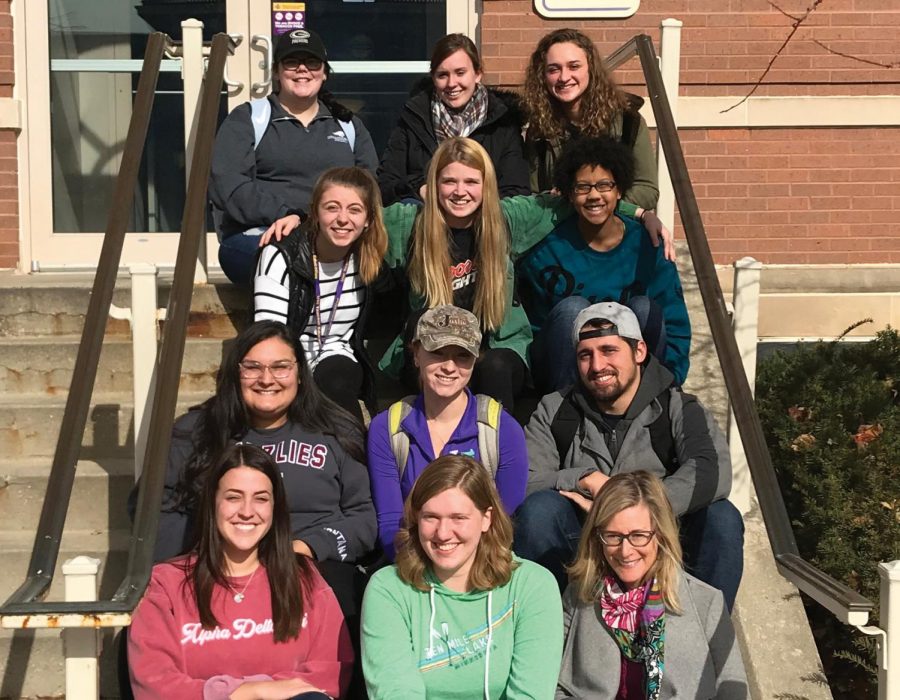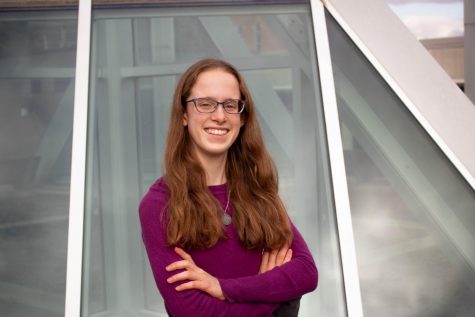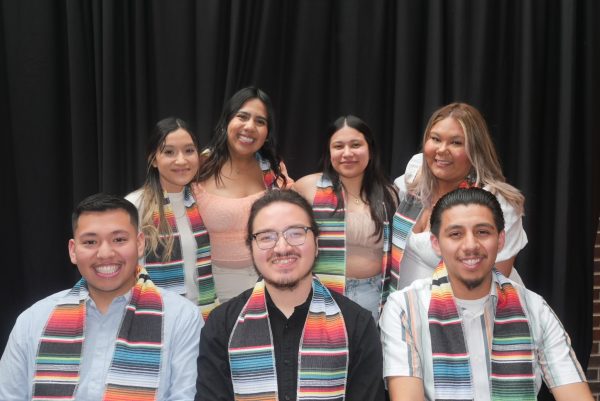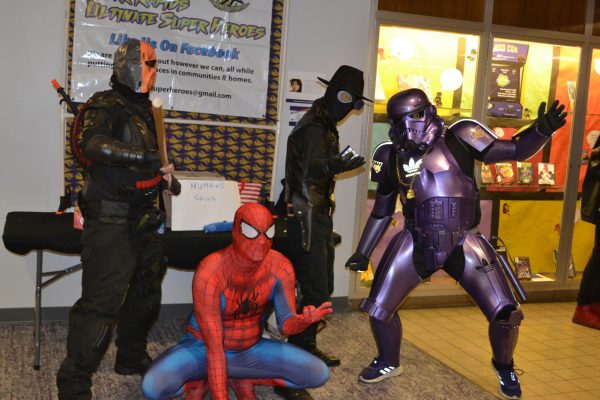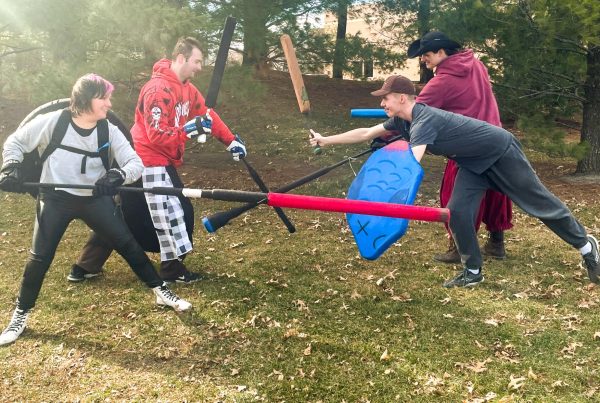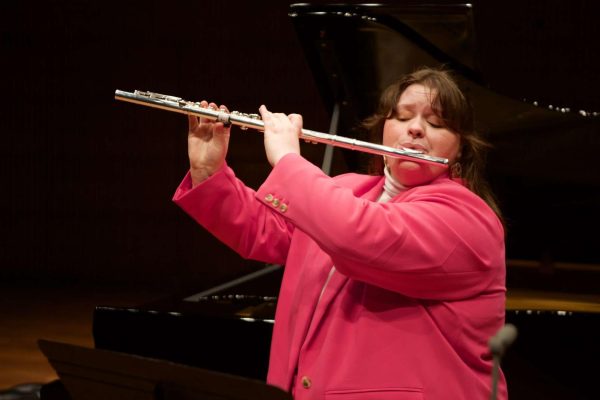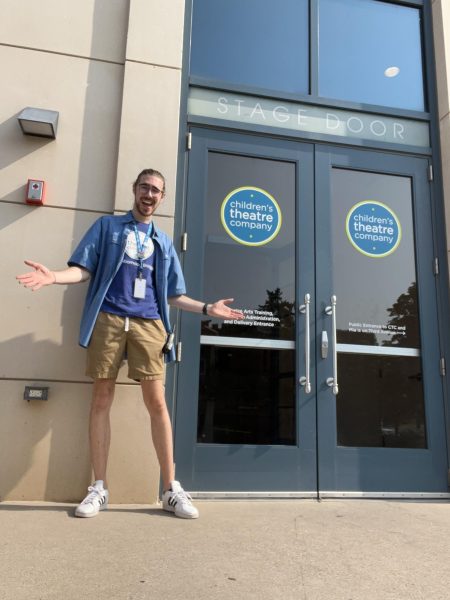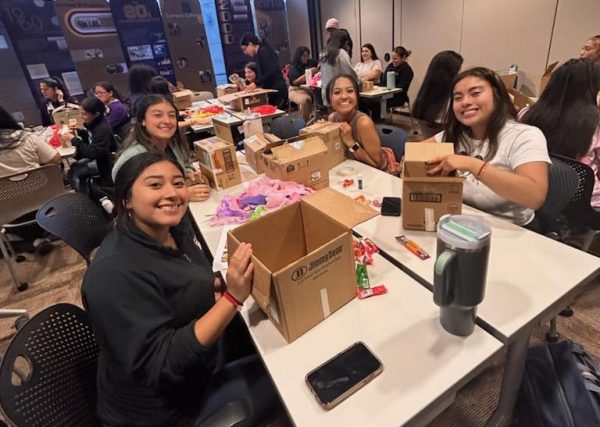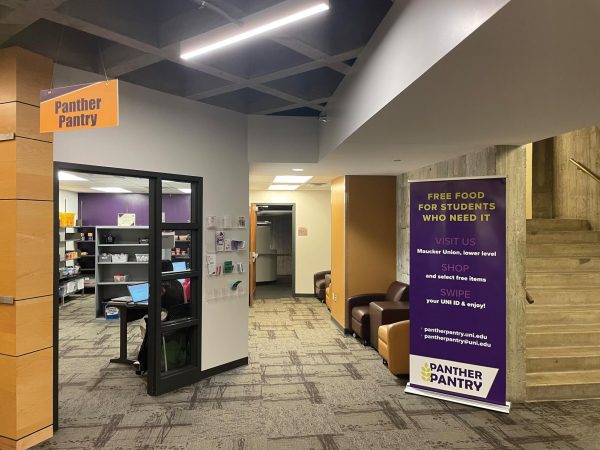Crossing the border with HSAB
JENNIFER COOLEY/Courtesy Photo
Students in Jennifer Cooley’s Advanced Conversation and Reading in Spanish class researched and created the border-crossing simulation.
Feb 28, 2019
“Are you ready to cross the border?”
Approximately 20 students nodded in response to the question posed by Jennifer Cooley, professor and head of the UNI Languages and Literatures Department.
They stood outside the University Room in Maucker Union on Monday evening, Feb. 25, waiting to experience a Border-Crossing Simulation hosted by the UNI Honors Student Advisory Board (HSAB).
According to Cooley, the simulation is an interactive performance event which arose as an extension of a class project from the fall section of her Spanish Advanced Conversation course. Students in the class watched documentaries, listened to radio interviews, read articles and conducted an interview with a local immigrant who has crossed the border three times. During the fall 2018 semester, the group performed the event at the UNI Center for Multicultural Education, as well as at regional schools such as Wartburg College and Hawkeye Community College.
Outside the darkened room, Cooley distributed notecards to each participant describing the persona that they would take on for the simulation, ranging from single mothers to teenagers and children. She then ushered participants into the room, two by two.
“Safe travels,” she said, closing the door behind them.
When participants entered, they were greeted by actor Olinca Padierna, a senior Spanish major. She stood behind a small folding table covered with face-down playing cards and instructed them — in Spanish — to choose one. The number they drew determined whether students could pass to the next checkpoint.
In total, there were three table checkpoints through which students had to pass to “cross the border” safely — the train, the shelter (“Casa de Migrantes”) and the border itself (“la frontera”). Another actor, junior Spanish education major Lauren Winter, roamed the room in the role of a gang member, demanding clothing, drugs and other valuables from participants. If students “died,” they were instructed to lay down on the floor, where they often found their shoes and glasses stolen by Winter and her fellow actors.
After about 20 minutes, Cooley switched on the lights, concluding the simulation portion of the evening. Participants retrieved their belongings and pulled up chairs to participate in a short debriefing session.
Cooley asked attendees to describe their emotions and reactions to the simulation. Since the simulation was conducted almost entirely in Spanish, attendees with no Spanish experience discussed the difficulties that the communication barrier imposed. Cooley said that this was by design, since many non-English speaking migrants struggle to communicate with border agents.
Anna Rasmussen, a senior psychology major who attended the event, said her inability to speak Spanish made her “frustrated and confused by the process.”
“I was overwhelmed by the fact that I didn’t really have control,” she said.
The lack of control and positive options was something that resonated with other attendees. By using a role of the dice or the random selection of a card to determine whether participants advanced to the next checkpoint, Cooley said the group “tried to recreate those moments of sheer chance.”
“Sometimes you find yourself in a situation where there are no good options,” she said.
Cooley said that contrary to some popular portrayals, immigration across the U.S.-Mexico border is not at its highest levels in history.
“But there is a different demographic,” she said, “because we are seeing more women than ever before and more unaccompanied minors than ever before.”
When discussing what she learned as an actor in the simulation, Winter said that the “specific details” of each individual story really resonated with her.
“Right now, you hear so much about immigration and crossing the border,” she said, “and I think it’s so easy to label those people and to just see it as an illegal act. We don’t always consider the people who are doing this or the reasons that they’re doing this, or the political and economic factors in their own countries.”
It’s this kind of critical thinking which Cooley wants to inspire.
“A lot of this has to do with spurring dialogue,” she said. “We really hope that when they leave the room, they’ll have some new and perhaps better-informed perspectives about the issue that we’re trying to explore.”
Both participants and attendees said that the simulation also reminded them of the disconnect between role-playing the events and actually experiencing them firsthand.
“This is just a brief taste of what they go through,” Rasmussen said.
“What we do is a simulation, but there are people who experience the real-life thing,” Winter said.


